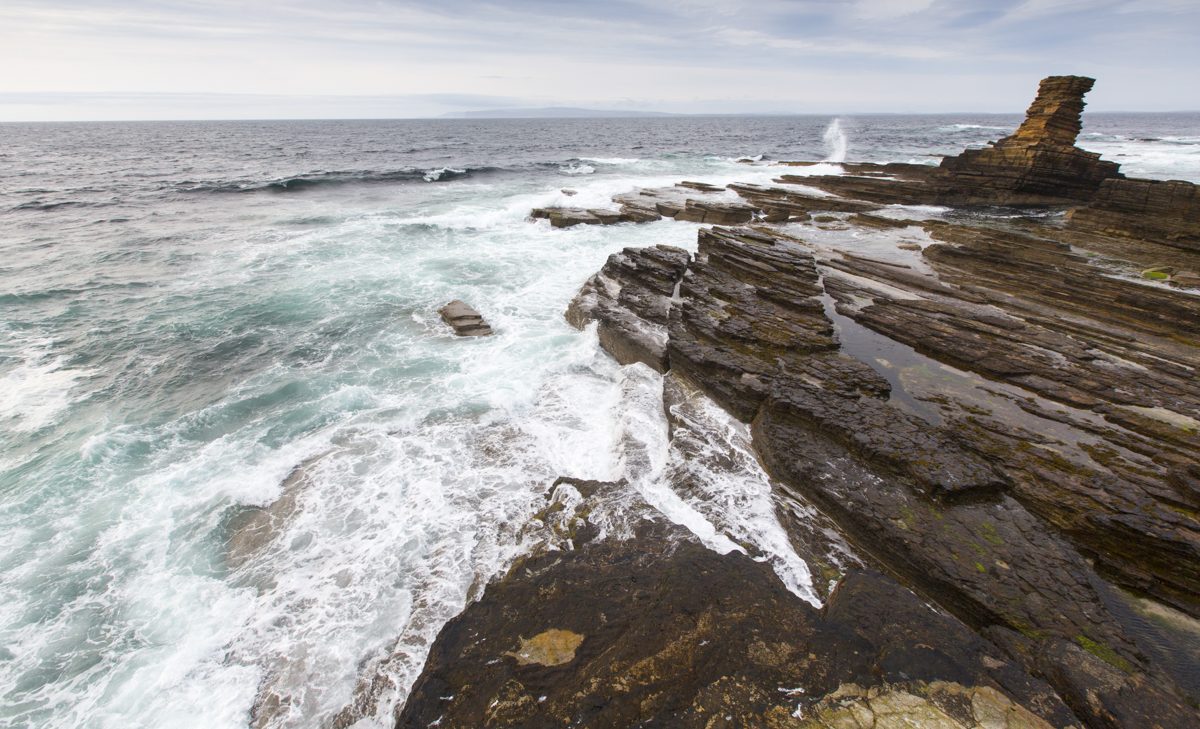What next for ocean energies in Europe?

03.03.2021
By Frédéric Simon | EURACTIV.com
The European Commission’s offshore energy strategy, presented in November, set the bar high for tidal and wave power, aiming for a total installed capacity of 1 GW by 2030 and 40 GW by 2050. The industry is now rolling up its sleeves to try and deliver on that promise.
While focusing chiefly on offshore wind power, which is the most advanced and technologically mature, the European Commission’s offshore energy strategy also put the emphasis on other sources of renewables – mainly wave and tidal – as well as floating wind and solar.
“Europe is a world leader in offshore renewable energy and can become a powerhouse for its global development,” the EU’s Energy Commissioner Kadri Simson said as she presented the strategy on 19 November.
“We must step up our game by harnessing all the potential of offshore wind and by advancing other technologies such as wave, tidal and floating solar,” she added.
The long-term goal is to have an installed capacity of 40 gigawatts for these emerging renewable energy technologies by 2050, the Commission said, up from a tiny level of 13 megawatt currently. As an intermediate target, the Commission strategy aims for 1 GW of ocean energy by 2030, saying these goals are “realistic and achievable”.
There are plenty of challenges ahead for the industry though, all of them related to one key objective: the need to scale up fast and reduce cost.
While European companies are global leaders in ocean energies, no specific technology has yet prevailed and “the sector still struggles to create an EU market despite progress in development and demonstration,” the Commission stated in its strategy.
“A significant reduction in cost would be needed for tidal and wave energy technologies to reach their potential in the energy mix,” the EU executive said but praised the sector for succeeding to cut costs by 40% since 2015, a reduction it said was “faster than anticipated”.
But despite those challenges, the Commission remains upbeat about the sector’s potential to scale up. Tidal and wave power are “reaching a level of maturity that makes them interesting for future applications,” the EU executive said in a media briefing note.
“A crucial but feasible step to reach commercial size by 2030 would be implementing the existing pipeline of 100 MW pilot-farms projects by 2025,” it added.
This is what the industry is now working on.
“We are confident the case for ocean energy will be self-evident once 100 MW has hit the water,” said Rémi Gruet, CEO of Ocean Energy Europe, a trade association. “What we need now is to transform aspirations into actions,” he said after the Commission presented its strategy in November.
Industrialisation gathering pace
Last week, Ocean Energy Europe presented its annual statistics for 2020, saying the industry remained resilient despite the disruptions caused by the COVID-19 pandemic.
“The industrialisation of the sector is gathering pace, with project investments of over €45m in 2020,” the trade association said. Global cumulative installations for wave and tidal energy reached 60 MW over the past decade. And in Europe alone, there are 6 MW of wave and tidal energy slated for deployment this year, it added.
“The path towards 100 MW of ocean energy by 2025 is opening up,” said Gruet, hailing the European Commission’s “political support” and ambitious targets for 2030 and 2050.
Reaching the EU’s new targets will be a challenge for the industry.
When it presented its offshore energy strategy, the Commission appeared to scale down its ambitions for the sector, aiming for 40 GW of installed capacity by 2050 instead of the 60 GW mentioned in an earlier draft.
The level of ambition for 2030 was similarly cut back: whereas the first draft aimed at 1-3 GW of installed capacity by the end of the decade, the Commission finally opted for a more cautious objective of 1 GW.
“On the missing 20 GW, it’s pretty clear that we need to scale up,” said an EU official who briefed journalists ahead of the strategy’s presentation in November.
Looking at the National Energy and Climate Plans (NECPs) submitted by EU member states, officials noticed that “very few of them” had listed tidal and wave power as a major energy source, the official explained. “So we rebalanced from 60 GW to 40 GW due to a rerun of the modelling”.
The industry itself recognises the challenges ahead. “Offshore renewables projects bring long-term benefits, but they also take time to get into the water,” Gruet said. Policymakers at the EU and national level now “need to roll up their sleeves and start implementing the strategy right away,” he said, adding: “The biggest challenge for the sector currently is the lack of a market, which is in turn due to a lack of revenue support for projects needed to achieve economies of scale.”
Still, the Commission is convinced that tidal and wave power are attractive in the long term, saying “ocean technologies could make a significant contribution to Europe’s energy system and industry as from 2030, in particular by supporting grid stability and playing a crucial role in decarbonising islands in the EU.”
Upcoming EU policy review
On the regulatory front, the industry has its eyes set on the upcoming revision of the renewable energy directive, set to be tabled in June as part of a package of EU legislation aimed at reaching the bloc’s 2030 climate objectives.
In this regard, Ocean Energy Europe said emerging technologies like tidal and wave, which are still at the pre-competitive stage, should continue enjoying special status under EU law.
“Member states should remain free to have technology-specific auctions, and emerging renewables should retain priority dispatch and exemption from balancing obligations,” the association told EURACTIV in emailed comments.
In addition, public funding for demonstration projects at the national level must be allowed to continue unhindered without EU interference, the group said.
“It is important that emerging renewables, which are too small to distort competition, don’t get tangled up in complex state aid rules. Emerging renewables should be exempted from notification – in particular demonstration projects,” it said.
